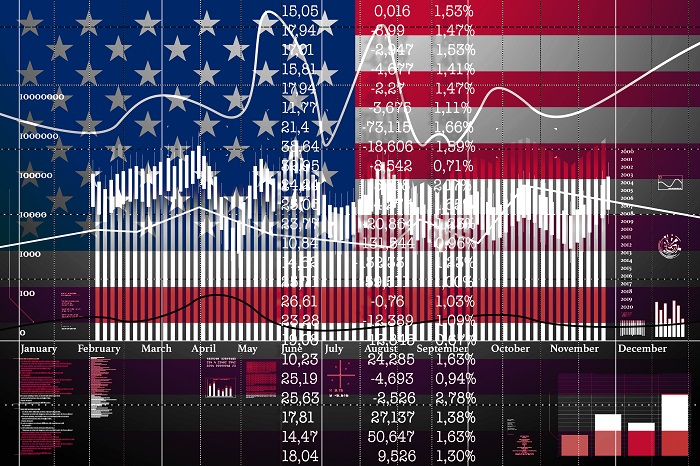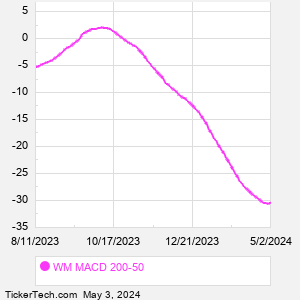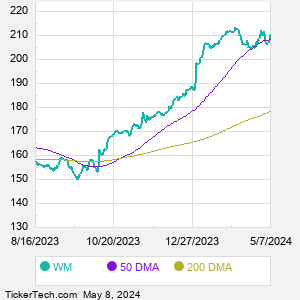Waste Management is a holding company. Through its subsidiaries, Co. is a provider of environmental solutions. Co.'s services include: Collection, which involves picking up and transporting waste and recyclable materials to a transfer station, material recovery facility or disposal site; Landfill, which includes excavation, construction of liners, continuous spreading and compacting of waste, covering of waste with earth or other material and constructing final capping of the landfill; Transfer, in which the solid waste is transported by transfer trucks or by rail to disposal sites; and Recycling, which includes materials processing, recycling commodities and recycling brokerage services.
When researching a stock like Waste Management, many investors are the most familiar with Fundamental Analysis — looking at a company's balance sheet, earnings, revenues, and what's happening in that company's underlying business. Investors who use Fundamental Analysis to identify good stocks to buy or sell can also benefit from WM Technical Analysis to help find a good entry or exit point. Technical Analysis is blind to the fundamentals and looks only at the trading data for WM stock — the real life supply and demand for the stock over time — and examines that data in different ways. One of those ways is to calculate a Simpe Moving Average ("SMA") by looking back a certain number of days. One of the most popular "longer look-backs" is the WM 200 day moving average ("WM 200 DMA"), while one of the most popular "shorter look-backs" is the WM 50 day moving average ("WM 50 DMA"). A chart showing both of these popular moving averages is shown on this page for Waste Management. Comparing two moving averages against each other can be a useful visualization tool: by calculating the difference between the WM 200 DMA and the WM 50 DMA, we get a moving average convergence divergence indicator ("WM MACD"). The WM MACD chart, in conjunction with the chart of the moving averages, basically helps in visualizing how the moving averages are showing convergence (moving closer together), or divergence (moving farther apart). |



